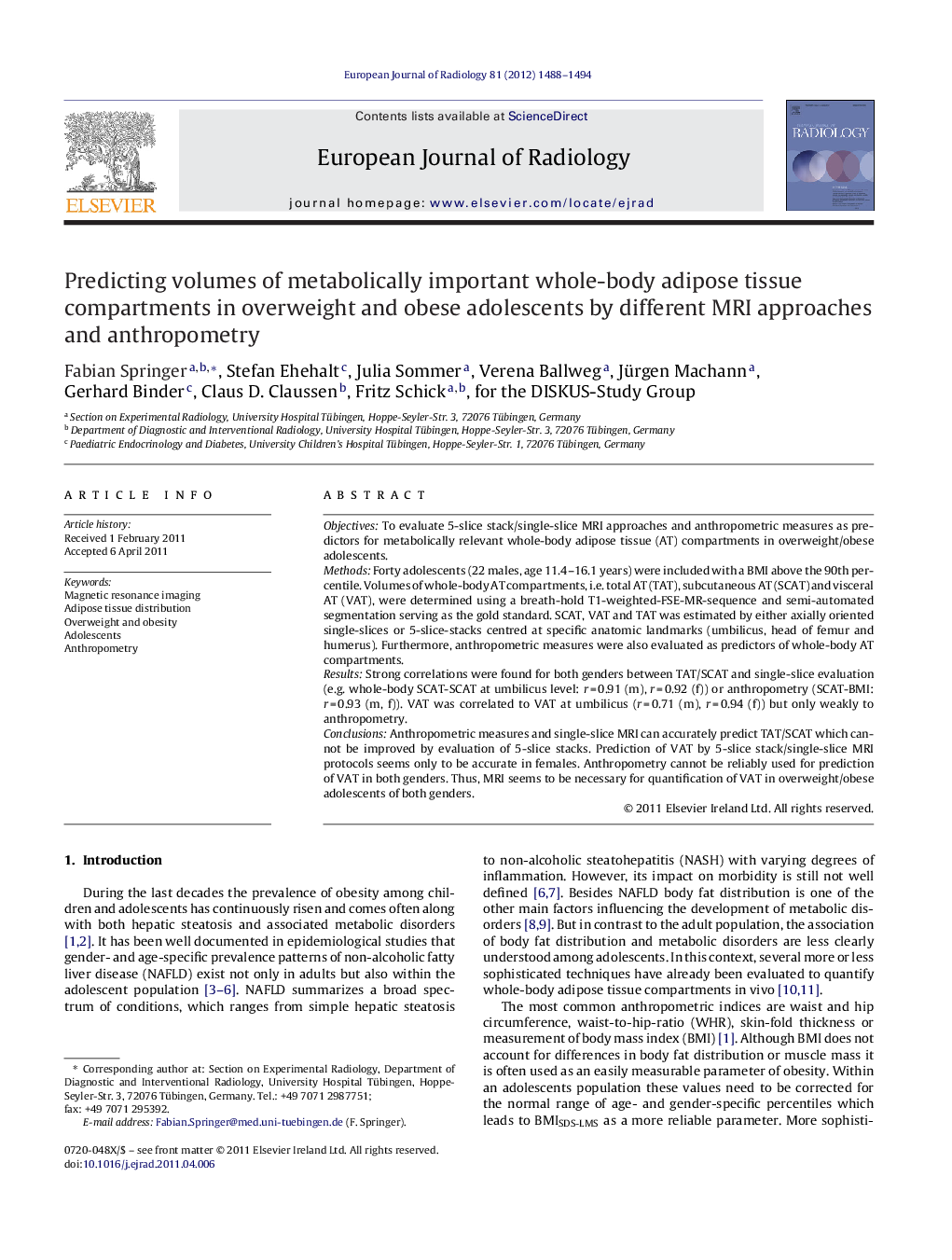| Article ID | Journal | Published Year | Pages | File Type |
|---|---|---|---|---|
| 4225759 | European Journal of Radiology | 2012 | 7 Pages |
ObjectivesTo evaluate 5-slice stack/single-slice MRI approaches and anthropometric measures as predictors for metabolically relevant whole-body adipose tissue (AT) compartments in overweight/obese adolescents.MethodsForty adolescents (22 males, age 11.4–16.1 years) were included with a BMI above the 90th percentile. Volumes of whole-body AT compartments, i.e. total AT (TAT), subcutaneous AT (SCAT) and visceral AT (VAT), were determined using a breath-hold T1-weighted-FSE-MR-sequence and semi-automated segmentation serving as the gold standard. SCAT, VAT and TAT was estimated by either axially oriented single-slices or 5-slice-stacks centred at specific anatomic landmarks (umbilicus, head of femur and humerus). Furthermore, anthropometric measures were also evaluated as predictors of whole-body AT compartments.ResultsStrong correlations were found for both genders between TAT/SCAT and single-slice evaluation (e.g. whole-body SCAT-SCAT at umbilicus level: r = 0.91 (m), r = 0.92 (f)) or anthropometry (SCAT-BMI: r = 0.93 (m, f)). VAT was correlated to VAT at umbilicus (r = 0.71 (m), r = 0.94 (f)) but only weakly to anthropometry.ConclusionsAnthropometric measures and single-slice MRI can accurately predict TAT/SCAT which cannot be improved by evaluation of 5-slice stacks. Prediction of VAT by 5-slice stack/single-slice MRI protocols seems only to be accurate in females. Anthropometry cannot be reliably used for prediction of VAT in both genders. Thus, MRI seems to be necessary for quantification of VAT in overweight/obese adolescents of both genders.
